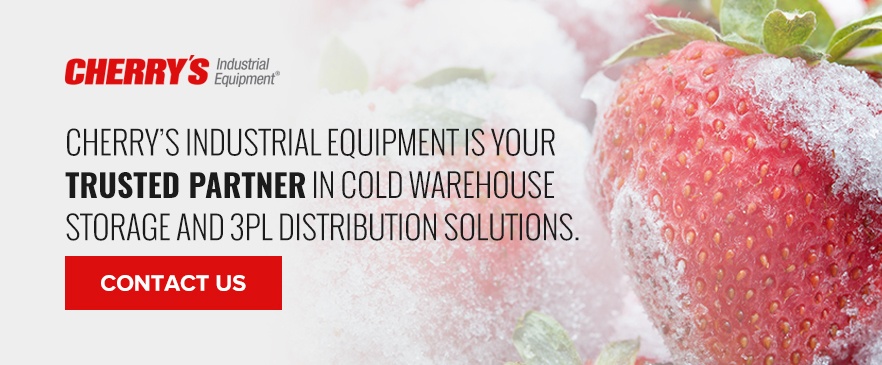Top Issues Facing 3PLs and Cold Storage Warehouses

Cold storage warehouses face unique challenges compared to dry-goods and conventional warehouses. Cold storage is a complex and high-cost market of the third-party logistics (3PL) industry, requiring strategic planning and execution to maintain profitability. However, it’s also an industry full of opportunity. According to a 2017 market research report, the global cold chain market was valued at USD 188.42 billion and projected to achieve a value of USD 269.61 billion by 2024. This means that despite the challenges facing third-party logistics, there’s still plenty of market demand that can drive the cold storage industry to overcome these challenges.
As consumer demand changes and distribution expectations become more urgent, the cold storage industry finds itself facing a set of new challenges. However, within these challenges of frozen food warehouses, there are opportunities to maximize efficiencies, improve productivity, mitigate product loss and drive profitability. This article covers today’s cold storage challenges and the current 3PL trends of 2019 that can help the cold storage industry overcome these obstacles.
Jump To Sections:
- 1. Power Consumption
- 2. Labor and Productivity
- 3. Lack of Long-Term Contracts
- 4. Industry Consolidation
- 5. Cold Storage Layout
- 6. Freezer-Grade Solutions
- 7. Multiple Cold Temperature Zones
- 8. Multiple Regulations and Requirements
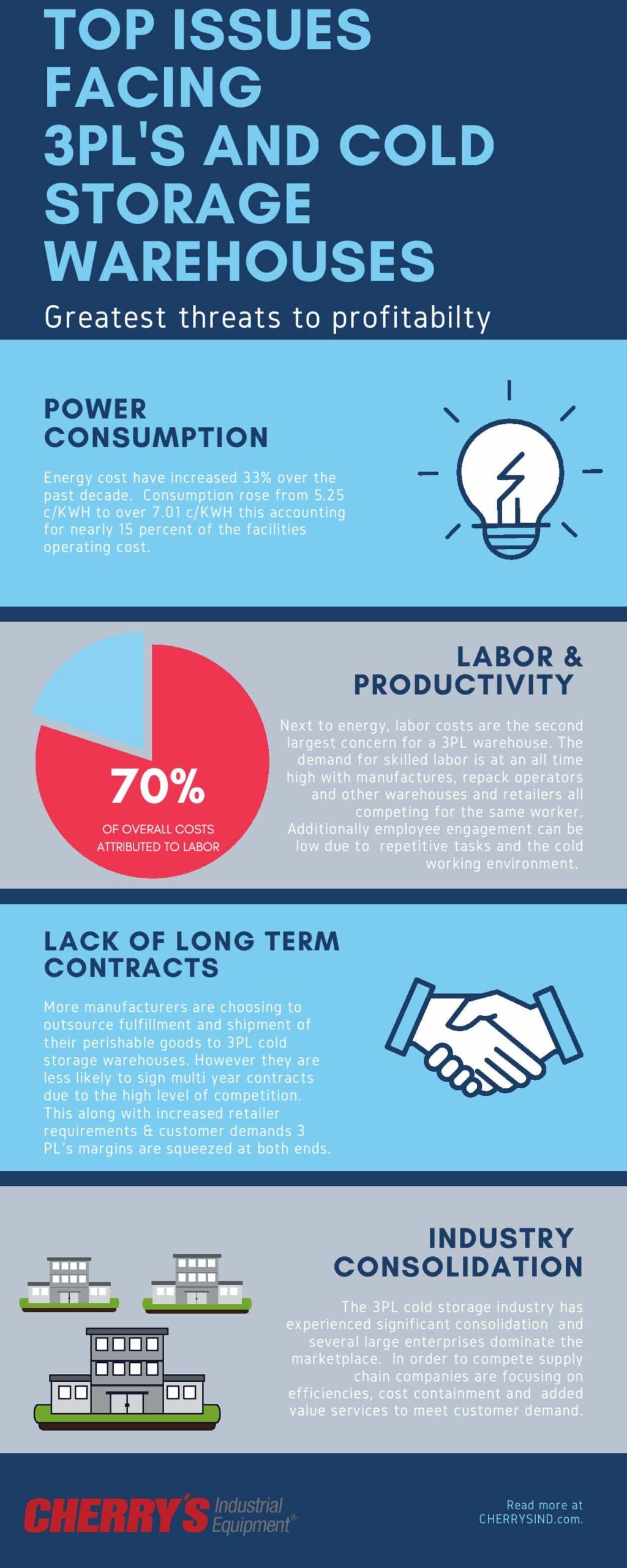
1. Power Consumption

Internally, warehouses and 3PLs are facing increasing overhead costs, and one of the primary contributors to rising operating expenses is the cost of power and the level of consumption required. According to the U.S. Energy Information Administration, the average cost of commercial energy consumption in the United States in 2018 was 10.67 cents per kWh. It’s safe to say that if that’s the average commercial space, a cold storage facility will incur significantly higher energy costs than what the typical space does.
Cold storage facilities are 24-hour operations, consuming an enormous level of power endlessly. The greater the square footage of a facility, the higher the power consumption. Since the cost of energy is consistently increasing, one of the biggest challenges of cold storage warehouses will be to improve energy efficiency and refrigeration controls to keep costs as low as possible for the level of energy required.
To overcome power consumption issues, cold storage facilities should look for ways to make their facilities more energy-efficient. Investing in the latest HVAC controls and technologies and implementing measuring and benchmarking practices to monitor and reduce energy consumption is the new standard business operation that cold facilities must adopt.
As for the transportation side of energy consumption, 3PLs incur refrigeration costs as well as fuel costs. Adopting more efficient logistics and transportation practices can help to cut back on fuel consumption and stabilize this aspect of operating expenses.
2. Labor and Productivity
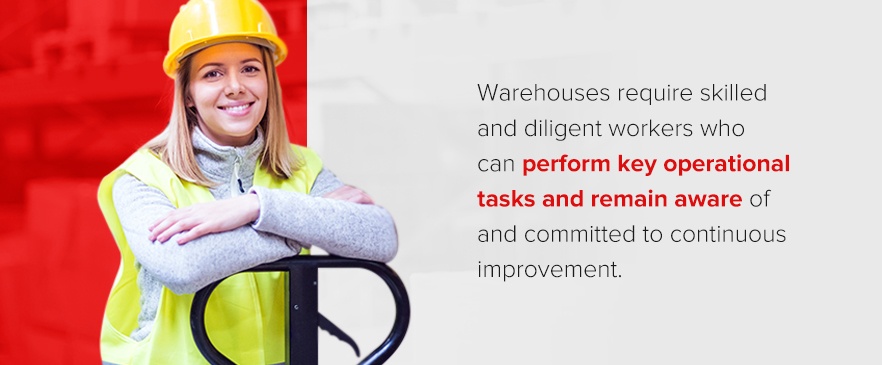
Every industry faces labor and productivity issues, including the cold storage industry. Despite its size, the market is tight when it comes to labor, and cold storage facilities and 3PLs compete for the same type of worker. Warehouses require skilled and diligent workers who can perform key operational tasks and remain aware of and committed to continuous improvement. Warehouses are continually looking for ways to improve efficiency, and their workers are their most valuable asset in providing useful feedback that can further streamline operations.
One of the most pressing issues for 3PL companies in 2019 has been the need to hire more workers to keep up with explosive customer demand and global expansion. Because of how vital labor is in cold storage warehouse management, managers must do what they can to promote employee buy-in — the intrinsic sense of contribution that workers need to stay productive. Incentive programs are becoming increasingly popular in the warehouse and 3PL industry as a way to motivate and encourage workers to do better work more consistently. Incentive programs reward your employees and keep them happy and satisfied, preventing them from jumping ship to the competitor.
Another aspect of improving productivity and retaining workers is how to go about keeping workers happy and safe when the nature of the job is doing repetitive tasks in the cold. For most people, this isn’t pleasant, but it can be made a lot more enjoyable with the right tweaks. Regularly assess the average day-to-day working conditions of your employees, carefully watching for even the smallest aspects of the job that can be unpleasant, which can add up when performed dozens of times per day. For example, specialized equipment that’s easy to use and operate with gloves can take some frustration and discomfort out of a worker’s routine. Consider investing in material handling equipment with large controls and warehouse management software devices that don’t require workers to remove their personal protective equipment (PPE) to operate.
3. Lack of Long-Term Contracts
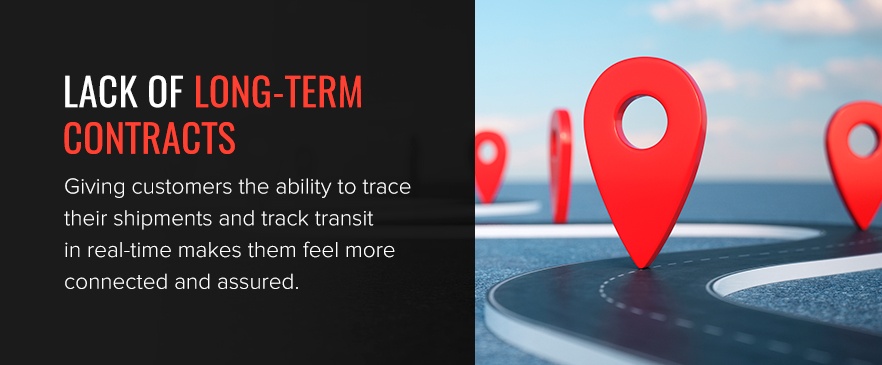
The 3PL marketplace is saturated with businesses all vying for the same manufacturer customers. For this reason, many manufacturers are hesitant to sign one multi-year contract with a single 3PL cold storage provider. Because there are so many service providers to choose from, manufacturers want to renegotiate contracts or find more value-added services with other companies. This makes the future customer base unstable for many 3PLs in this situation, forcing them to find better ways to compete. One of the ways that 3PL cold storage businesses can compete is by improving the traceability of inventory for their customers.
Giving customers the ability to trace their shipments and track transit in real-time makes them feel more connected and assured. If customers feel they can manage their products from a distance and remain aware of their inventory at all times, it helps build trust and solidifies the relationship between the customer and the 3PL. With better customer-supplier relationships, manufacturers feel more inclined to stay on and invest in long-term contracts with their existing 3PLs.
Because of the pressure on cold storage companies to become full-scale logistics companies, businesses are investing in highly integrated software that can give customers access to their own portals where they can pull data about their inventory. This allows companies to demonstrate directly to their customers how efficient their 3PL processes are and prove they can continue to meet consumer demands.
4. Industry Consolidation

For several years, 3PL companies have strategically undergone major mergers and acquisitions, effectively consolidating several of the main providers into a few major conglomerates. Even smaller 3PLs have been experiencing acquisitions due to their proprietary advantages like technologies, talent or niche market knowledge. This industry consolidation has allowed many major 3PLs to now cover broader areas and services and reach far more customers than before.
Companies on either side face particular challenges in this new industry landscape. For smaller companies that have recently been acquired, they face expected challenges like leadership changes, which can also affect employee morale. Sometimes it’s hard to merge two separate and distinct company cultures together, and everyone experiences a difficult transition period. Additionally, the newly acquired company may have to integrate or alter their current logistics systems — many of which have been developed with heavy investment — so they mesh with their acquisition company.
For companies that remain independent, it’s becoming more difficult to compete despite fewer overall competitors. Because the merged companies typically have the advantage of breadth and depth, the independent, smaller 3PLs must now innovate and come up with creative solutions to niche customer problems.
5. Cold Storage Layout
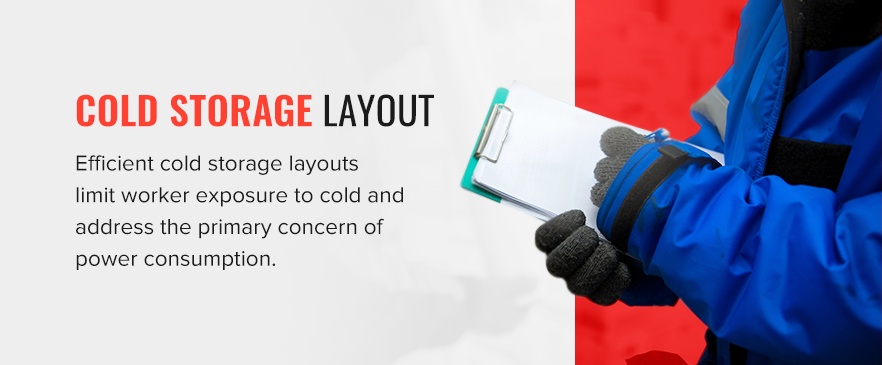
Cold storage warehousing is a truly unique segment of the 3PL industry. While all warehouses face the common issue of how to optimize space utilization, cold storage warehouses have certain added challenges. Cold storage facilities must optimize their warehouse layout to streamline efficiency and limit the potential impact that the cold environment has on workers. The more time workers spend in warehouses storing, picking and packing goods, the longer they’re exposed to the sensitive conditions. Even though these workers must receive adequate PPE to keep them protected from the cold, it’s still critical to minimize their level of exposure. Having an effective warehouse layout can accomplish this.
Efficient cold storage layouts limit worker exposure to cold and address the primary concern of power consumption. When dealing with sensitive goods that require precise environmental conditions, it’s critical that your facility always maintains and controls the temperature. However, this uses an enormous amount of power. The solution to achieve a trade-off between preserving precious inventory and being more energy efficient is to maximize space within a smaller footprint. Because energy costs are determined by the cubic foot, the smaller area you can operate within while still housing all customer inventory, the better.
High-density storage solutions maximize the volume of inventory you can house in as small a footprint as possible. These storage solutions typically look like massive industrial racks that have deep and tall shelving. They allow you to maximize the vertical and cubic space of the warehouse within a smaller footprint. Additionally, anytime a temperature-controlled area of the warehouse is accessed by opening a door or pulling back a curtain, the control system kicks in to help restore the temperature to its set state after the heat entered the unit. This adds to energy costs each time, so having a warehouse that accounts for minimal cold-loss is critical.
Cold-storage retrieval systems are designed to address all of these challenges that facilities face with warehouse layout and storage. Cold-storage retrieval allows pallets to pass through small openings to minimize cold-loss and reseal instantly. These and other innovative storage and material-handling solutions help address some of these critical challenges of 3PL warehouses for cold storage.
6. Freezer-Grade Solutions
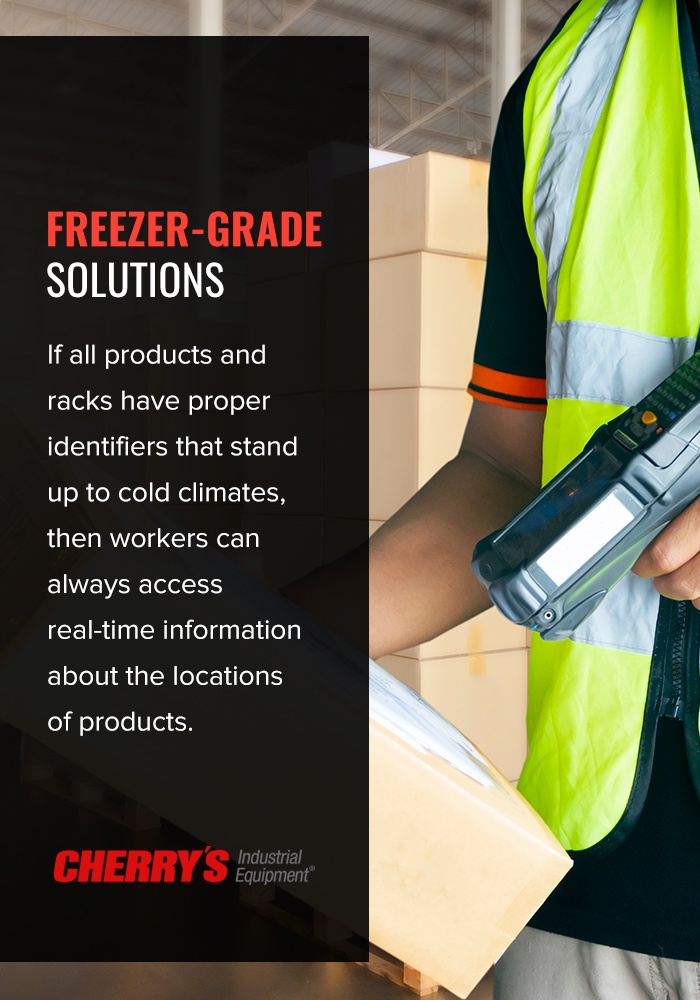
For any warehouse to run efficiently, there must be a comprehensive inventory management system in place. Managers and customers need to know where their inventory is at all times. That’s why many warehouses today have adopted the barcode-and-scanner approach to managing inventory. Barcodes and labeling systems allow workers to input every item of inventory and associate it with a particular status, such as where in the warehouse or supply chain it’s currently located. However, conventional barcodes and labels adhere to packaging, pallets and racks with general-purpose adhesives designed to stick to surfaces at standard room temperature.
Because cold storage warehouses operate at variable and extremely cold temperatures, typical barcodes and labels can easily peel off and become damaged. If workers can’t identify the goods, their inventory management procedures suffer. Cold storage warehouses must adopt customized inventory management solutions that resist extreme temperatures and maintain the integrity of the labels. Managers implement proper rack labeling techniques that will prevent barcodes and labels from becoming damaged. These freezer-grade labels adhere permanently, even in frozen environments. If all products and racks have proper identifiers that stand up to cold climates, then workers can always access real-time information about the locations of products and where in the shipping, receiving or transporting process they’re located.
Another challenge facing third-party logistics companies and cold warehouses is the fact that not all devices will operate under cold conditions. Scanners that use conventional batteries may not last as long when being operated in a cold environment. Managers must source and adopt solutions that will withstand cold temperatures. Some devices are designed with temperature seals that resist the constant climate fluctuations and will maintain a longer life cycle. Some of them even have small heat sources inside the hardware to prevent freezing.
7. Multiple Cold Temperature Zones
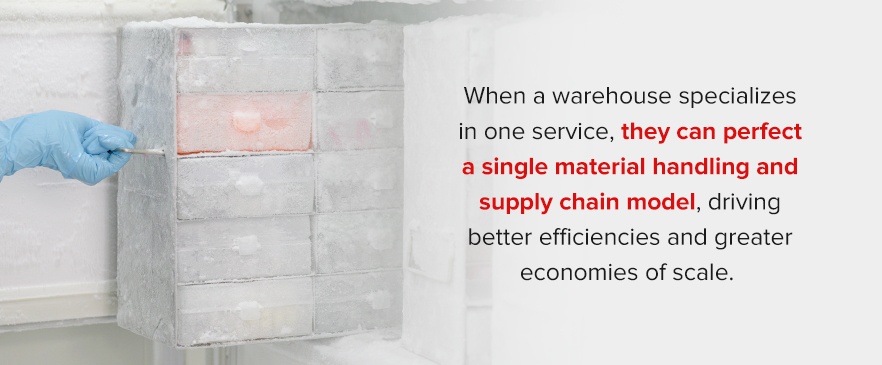
In the typical cold storage warehouse, there will be several different categories of products, all requiring a different temperature range to be preserved and protected properly to prevent spoilage and waste. For example, produce needs to be stored at one temperature while meat products will need to be stored at a much colder temperature. Therefore, the warehouse will be divided into different temperature zones, each controlled so that it stays at a certain temperature viable for that particular type of food or product.
Having the capability to store multiple different types of products in different climates is good for diversifying a 3PL cold storage business’s customer base. It means they can serve many different types of manufacturers and keep a steady stream of revenue. However, the more temperature zones a warehouse has, the more expensive and complex it is to operate. Depending on how many goods the warehouse is storing at any given time, these different temperature zones must be able to scale up or down to accommodate the current volume of inventory. In a conventional warehouse, you can easily move pallets from one area to the other to reconfigure your storage needs. In a cold storage facility, managers need to make inventory arrangement decisions based on temperature. Implementing modular walls can solve this unique cold storage challenge. Workers can easily move and rearrange these walls based on how much or how little space they need for each temperature zone. This is a cost-effective and flexible solution that allows 3PLs to continue operating without needing to make expensive investments in new, permanent cold storage zones.
Another related challenge is that cold storage facilities must have checks and balances in place to ensure that each refrigerated zone remains at its designated temperature. Warehouses must invest in temperature control technology that will provide 24/7 monitoring to identify and solve any temperature inconsistencies or changes. Having these measures in place is the best way to preserve products and prevent waste, and it also proves reliability to your customers.
Managing multiple different temperature zones while trying to keep space management and power consumption as efficient as possible can make for a costly operation. One of the ways to overcome this challenge is specialization. Many 3PLs are transitioning to offering fewer cold-storage solutions but at higher quality and better service levels. When a warehouse specializes in one service, they can perfect a single material handling and supply chain model, driving better efficiencies and greater economies of scale. Because a specialized facility then becomes more cost-effective to operate, the savings naturally get passed on to the customers, who then become more likely to commit to long-term contracts. By switching a warehouse’s model to focus on one specialized role, 3PL businesses can subsequently overcome multiple cold storage challenges at once.
8. Multiple Regulations and Requirements

Traceability is one of the most important cold storage warehouse requirements that 3PLs must adhere to. Government regulations are becoming more and more strict, and customers are demanding higher standards of service. Regulations of all levels require specific food safety and handling procedures be followed, and that includes thorough inspections and rigid temperature controls. Traceability offers the regulators, and the customers, the ability to ensure that food handling is performed correctly and that there’s limited risk of waste and contamination. Traceability gives customers and regulators insight into every step of the supply chain, holding 3PLs and warehouses to a high standard of accountability.
Additional regulatory and requirement factors can pose challenges to cold storage warehouses. In an increasingly globalized world, 3PLs are naturally expanding distribution cross-nationally and even globally. While this presents a huge opportunity for continued business expansion, it also comes with some added barriers. Warehouses must scale up operations to support a greater customer base and address the growing complexities of the supply chain. Logistics become more complicated with a broader reach as do the multitude of regulations and requirements that cold-storage product distribution is subject to.
Each country and region has its own sets of rules and regulations that companies are required to follow, and many of these regulations get updated regularly, so 3PLs must always keep up with the latest requirements to continue trading without penalty and delay. Additionally, each customer may have their own unique requirements that must be met. If 3PLs can’t meet these demands, they risk losing the contract with that customer. For cold storage warehouses to overcome this challenge, they need to develop excellent value-added services as well as niche offerings they know they can meet.
Cherry’s Industrial for Cold Storage Warehouses and 3PLs
There’s no question that cold storage warehouses and the 3PL industry face a tough set of challenges. However, many of these obstacles can be overcome by partnering with the right suppliers who can deliver innovative and reliable solutions. Cherry’s Industrial Equipment is your trusted partner in cold warehouse storage and 3PL distribution solutions.
At Cherry’s Industrial Equipment, we pride ourselves on being a one-stop-shop for high-quality material handling and distribution equipment for the 3PL industry and cold storage and frozen food warehouses. Our solutions support your company’s goals of faster, more efficient warehouse operations and higher safety standards. For cold storage warehouses, we offer sanitary plastic pallets, stainless steel pallet inverters, and freezer spacers and pallet retrievers. For more convenience in 3PL cold storage warehouses, Cherry’s can also supply you with semi- or fully-automatic stretch wrapping machines and pallet washing equipment.
To learn more about the right 3PL cold storage warehouse equipment for you, contact a Cherry’s representative today. Call us at 1-800-350-0011 or contact us online.
